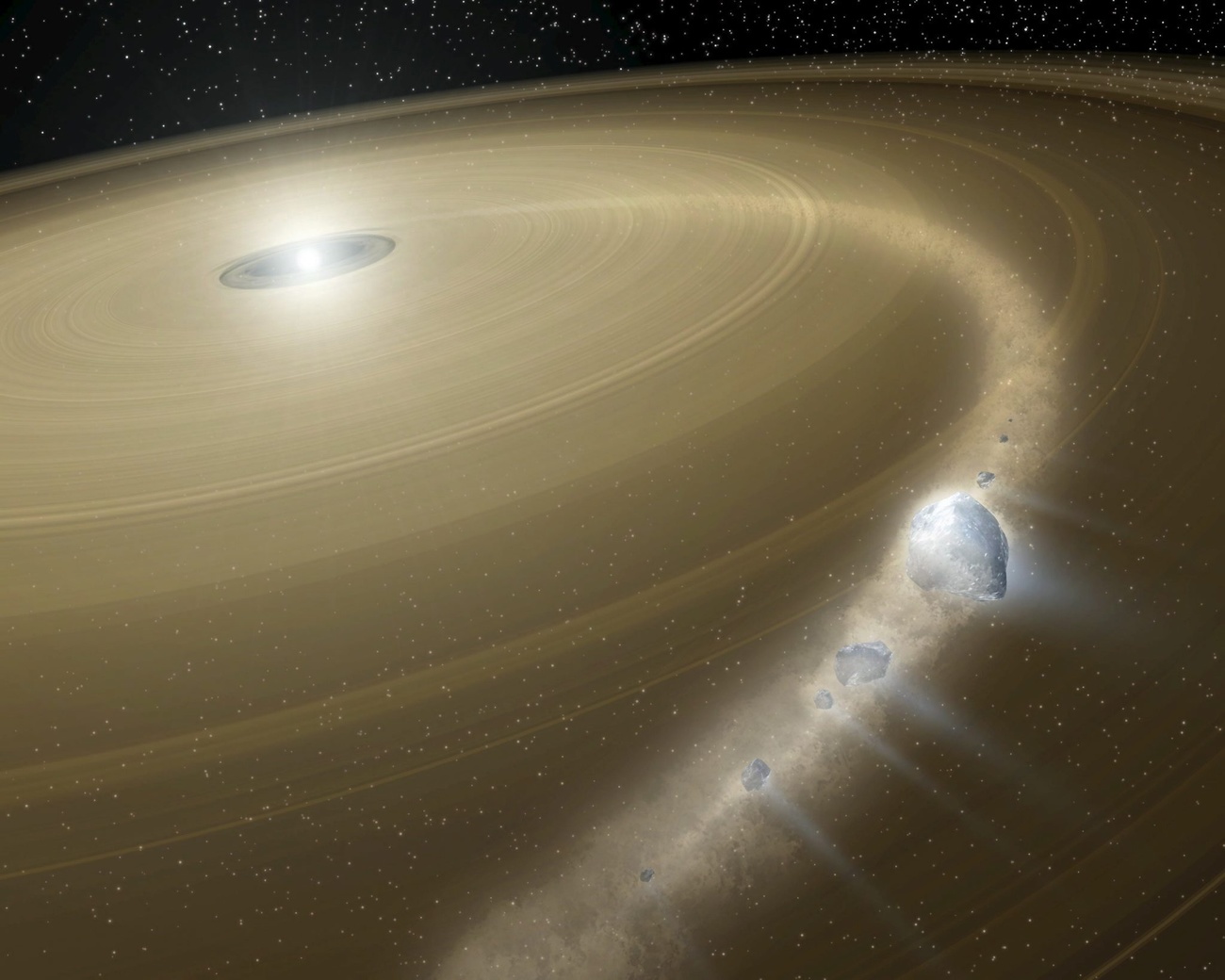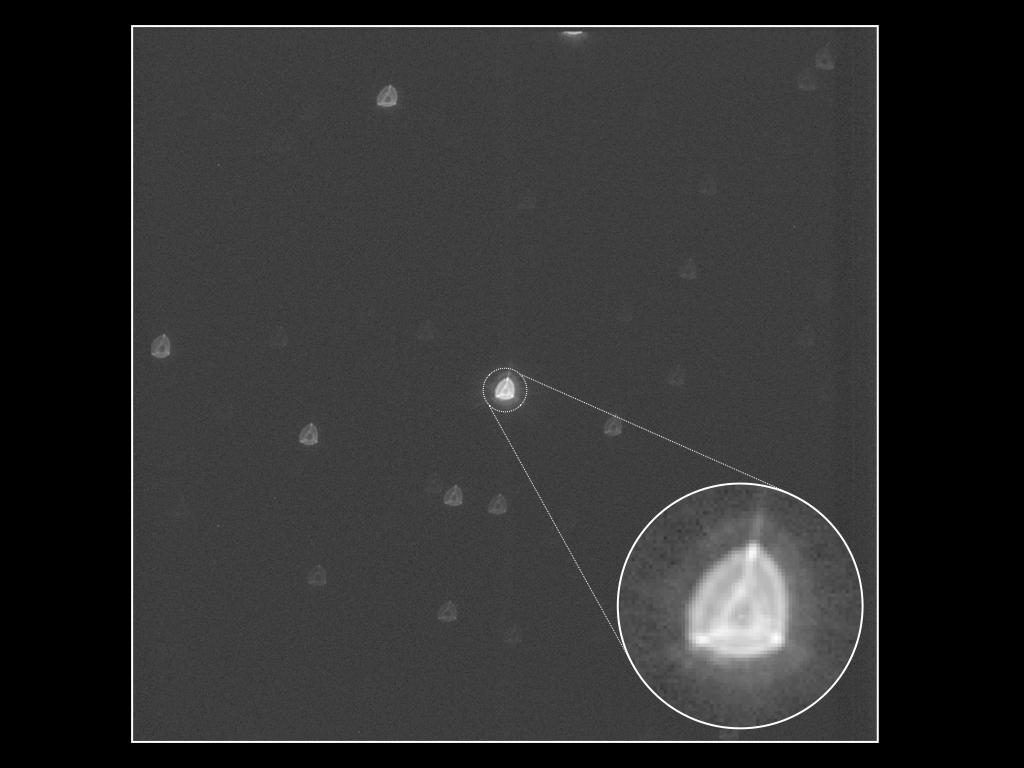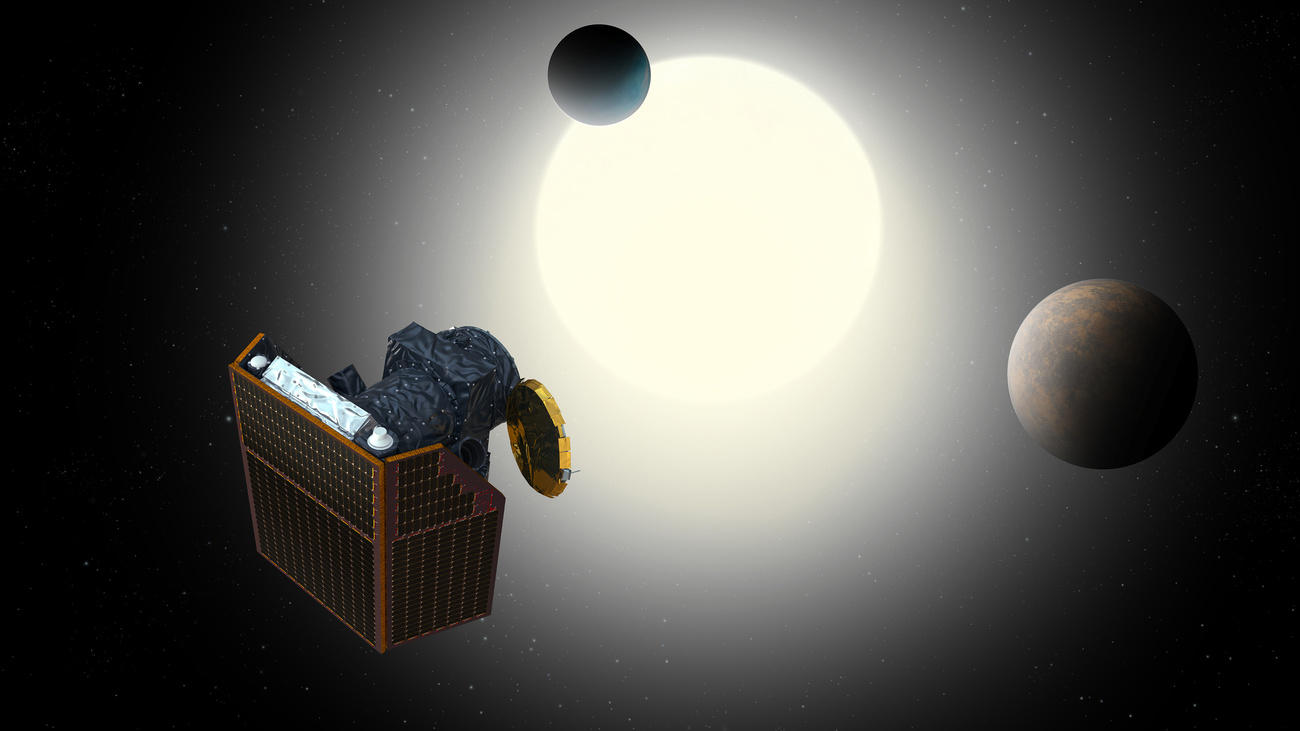Researchers discover giant planet

For the first time, researchers have discovered a giant intact planet that survived the collapse of its star. The international team, including astrophysicists based in Switzerland, has published its findings in the journal Nature.
Finding a planet near the remains of a star was highly unexpected. When a sun-like star dies, it bloats into a red giant that consumes what’s in its orbit. Later, the star collapses into a massive white dwarf, which is the cooling Earth-sized core of the dead star. The findingExternal link suggests that even after a typical star dies, it can still host planets.
The team in Bern made its discovery with the help of NASA’s Transiting Exoplanet Survey Satellite (TESS) telescope. Researchers from the University of Bern’s Center for Space and Habitability led a photometric analysis of the planet, which has been named WD 1586 b.
The gas planet is much larger than the white dwarf that it orbits every 1.4 days, from a distance that is about 20 times closer than Mercury is to the Sun. The team assumes that the gaseous planet moved into close orbit long after the star had shrunk from its red giant phase – otherwise it would have been swallowed up.
The gaseous planet is up to 14 times the size of Jupiter. Its temperature is no more than 17 degrees Celsius. The researchers found this out using the NASA telescope Spitzer.
In a few billion years, the Sun will also degenerate into a white dwarf. During the red giant phase, Mercury and Venus will probably be swallowed up, and perhaps the Earth as well. Based on this latest discovery, it seems that the gas planets of the solar system may survive.
Last year, researchers reported a gas disc orbiting a white dwarf. The gas seems to have a similar composition to Neptune and Uranus, which is why they suspected that the gas might come from a planet. However, they couldn’t actually find it.

More
Swiss exoplanet telescope: first, good pictures

More
Swiss space telescope declared fit to observe distant planets

In compliance with the JTI standards
More: SWI swissinfo.ch certified by the Journalism Trust Initiative
Join the conversation!